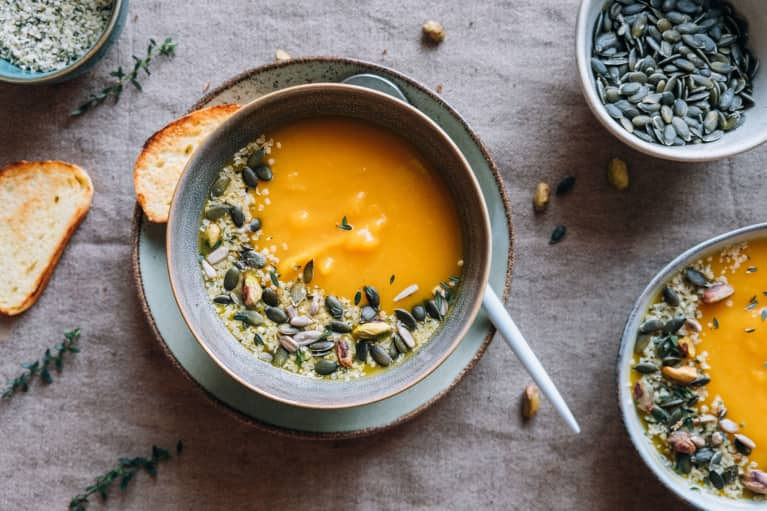PHOTO: GETTY

It's about so much more than managing your weight.
Adopting new health and wellness tips and implementing them into your daily life can seem daunting at first. Where do you start? What good habits should you prioritize in your efforts to focus on healthy living?
The field of health and wellness is constantly changing. Every day, new scientific findings and updated health advice and recommendations are released that help you learn how to live a healthy lifestyle.
This can be very confusing for you as a consumer and makes it difficult to know what information is "true" and which healthy habits are the most important.
But there's a simple approach you can use in order to learn how to get healthy and change your life, and that method is an acronym called "L.E.A.N."
L.E.A.N. stands for Lifestyle, Exercise, Attitude, and Nutrition. This method isn't about being skinny; it's about learning how to be healthy.
Lifestyle refers to how you live.
This is how you make your choices in life, how you divide your time between work, relaxation, and sleep.
It's also what you do with your time, how you relax, how you spend your money, and how you choose to care for yourself and your family. How do you handle stress? This is also about the choices you make regarding food.
Exercise refers to how you move and are physically active.
This is important for your physical, mental, and emotional health. Exercise helps control your appetite so that it makes it easier to choose real, healthy food that's good for you.
Exercise helps you to cope with stress so you don't have to use substances to unwind. "Stressing out" is what happens when you don't handle stress in a healthy way. And the best of all, exercise help put you in a good mood and maintain a positive attitude.
Attitude refers to how you think and feel, and how well you keep your mind, body, and emotions healthy.
In times when you're going through many changes or stress, this is especially important. Body and mind are connected. What happens in your mind affects the health of your body, and the way your body works influences your emotions.
It is important for you to have a healthy perspective about what you're going through. It is important for you to learn to listen to your body and develop a trust for your gut feeling. Attitude is a big part of making healthy choices in your life.
Nutrition refers to how you eat.
Your body's intake of nutrients can foster optimal health. Real, healthy food is important for supporting your health and overall life. Learn to eat the right kind of food that's nutrient-dense and avoid foods that are high in saturated fat, trans-fats, and sugar.
Become conscious of the foods you're eating to only say "yes" to healthy, nutritional everyday food and "no" to foods that provide little or no nutritional value.
Eating healthy doesn't have to mean counting calories, monitoring fat content, or analyzing every detail of the nutrition facts. It just means making informed, knowledgeable choices about what you're putting into your body.
Here are 10 ways focusing on the acronym L.E.A.N. (lifestyle, exercise, attitude, and nutrition) can help you form good habits and learn how to live a healthy lifestyle.
1. Read food labels.
Don’t get bogged down trying to understand every single ingredient. Instead, focus on avoiding high fructose corn syrup, hydrogenated oils, and artificial colors. If any of these are on the label, look for a healthier option.
2. Learn to recognize MSG.
Monosodium glutamate, or MSG, is a flavor enhancer used in packaged foods that some people are sensitive to. MSG is listed on food labels under a variety of names including “modified food starch” and “barley malt.”
3. Quality is more important than quantity.
Rather than counting calories, fat, etc. and worrying about how much you’re eating, focus on eating quality foods that are grown and organic, not manufactured. These foods are naturally high in fiber and protein and are low in sugar and hydrogenated oils.
4. Eat mindfully.
Don’t turn on the TV when you sit down to eat ;and try to avoid eating in the car. Use meal time as a way to connect with yourself and your family. Mindful eating is when you focus on the food you're consurming, rather than eating with other distractions like TV, computers, and phones.
5. Go fish!
Include more wild caught fish into your diet, especially wild-caught salmon. Fish has high levels of omega-3 fat, which is essential for brain health. You can also enjoy tuna, halibut, catfish, rainbow trout, cod, anchovies, and sardines.
6. Stay hydrated.
Begin your day with a tall drink of water. Try to avoid sweetened or artificially colored drinks and opt for water instead.
7. Become a grazer.
Eating smaller meals or snacks more frequently throughout the day will help with digestion and weight control. Think nuts, smoothies, fruits, and veggies.
8. Get a buddy.
Starting healthy habits (and keeping them!) is easier when you have a partner to share the journey with you. Enlist the support of a friend or family member for added accountability.
9. Pamper yourself.
Self-care is more than eating the right food. It’s also about scheduling “me time,” and can include things like getting a massage, going for a leisurely walk, or scheduling a spa day. Take time to do things that you enjoy!
10. Be realistic.
As the saying goes, “Rome wasn’t built in a day!” Start with a few changes at first and gradually incorporate more healthy habits over time.
The aim is to bring your physical, mental, and emotional body into harmony. This can happen through lifestyle changes, regular exercising, changes in your attitude, and the healthy foods you choose to consume.
While that information is certainly important, it can become overwhelming when trying to make healthy choices for you and your family. One step at a time — small steps and big changes!
Know that the effort to nourish your body, mind, and soul well will result in better health for you. Every change — no matter how small — that you make toward better self-care, more self-love, a healthy lifestyle, and smarter nutritional choices is a step in the right direction.
Source: YourTango

